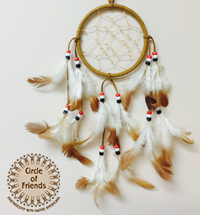| Home | About Us | Services | Success Stories | How to Help | Resources |
 |
of Plains Indians American Horse Amos Bad Heart Bull Ben Nighthorse Campbell Big Foot Black Elk Crazy Horse Dull Knife Francis La Flesche Gertrude Simmons Bonnin Little Wolf Oscar Howe Plenty Coups Red Cloud Robert Eugene Megginson Sacajawea Sitting Bull Spotted Tail Standing Bear Susan La Flesche Susette La Flesche Washakie History and Culture Reservations Living Conditions Site Map FAQs Gift Catalog IRS Form 990 |
Biographies of Plains Indians Sacajawea — ca. 1784-1884 Sacajawea, the Shoshoni guide for the Lewis and Clark expedition, was born 1784 or 1787 (reports vary) in what is now present-day Idaho. At the age of ten she was kidnapped during a raid by the Hidatsa Indians and taken to their village near present day Mandan, North Dakota. In 1804 Sacajawea and another Native American girl were sold to the French fur trader Toussaint Charbonneau. Charbonneau wed both of the young Native Americans. When Charbonneau was hired by Lewis and Clark in the winter of 1804-05 he insisted that Sacajawea be allowed to accompany the expedition on the remainder of their trip west. The young Shoshoni woman would serve as an interpreter for the band of explorers. She spoke to the Native Americans the expedition encountered and translated into Hidatsa to Charbonneau, who in turn would translate into English for the rest of the party. When she was unable to understand the language of the tribe, she would use sign language to make known their desires. With her on the journey she carried her young infant Jean Baptiste, called Pomp or Pompey by expedition leader William Clark. In August of 1805 when the expedition reached the navigable limits of the Missouri, Merriweather Lewis set out to make contact with a Shoshoni band, from whom he hoped to obtain horses for the trip across the mountains. Sacajawea discovered the band was led by her older brother Cameahwait, who had become chief on the death of their father. From Cameahwait Sacajawea was able to obtain food, horses and an elderly Shoshoni guide to help the explorers continue their journey to the Pacific Ocean. Sacajawea served not only as an interpreter, but also revealed to Lewis and Clark important passageways through the wilderness. She provided the group with valuable information about edible plants and her mere presence along with her infant son indicated to the Native Americans they met that the expedition was a peaceful one. She was also responsible for housekeeping and food preparation Sacajawea could have stayed with the Shoshoni, but chose to accompany the “Corp of Discovery” to the Pacific Ocean and then back to Hidatsa village on the Upper Missouri. Historians do not have a definitive picture of history from this point on. It is thought that she may have died in 1812 of an epidemic of “putrid fever.” However other accounts claim that she rejoined her Shoshoni tribe and died in 1884 on the Wind River Reservation in Montana. Of the many memorials to Sacajawea the most famous is a statue in Washington Park in Portland, Oregon. In 2000 the U.S. Mint issued a new gold dollar coin with the image of this resourceful, amazing Native American guide. |
Join our Circle of Friends - make a monthly gift!
We call this group Circle of Friends, because a friend is someone who makes a lasting commitment. You will receive* a free "thank you" gift for donating monthly: a beautiful dreamcatcher. (* While supplies last.) |





